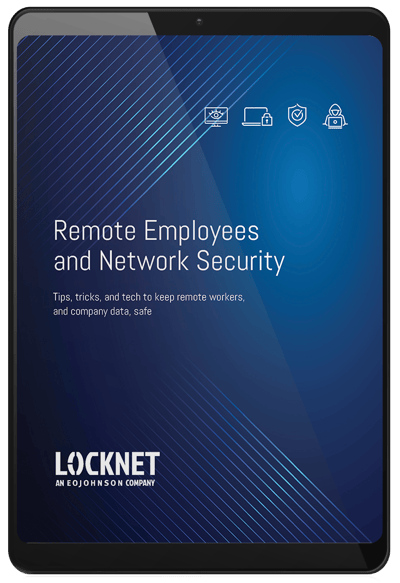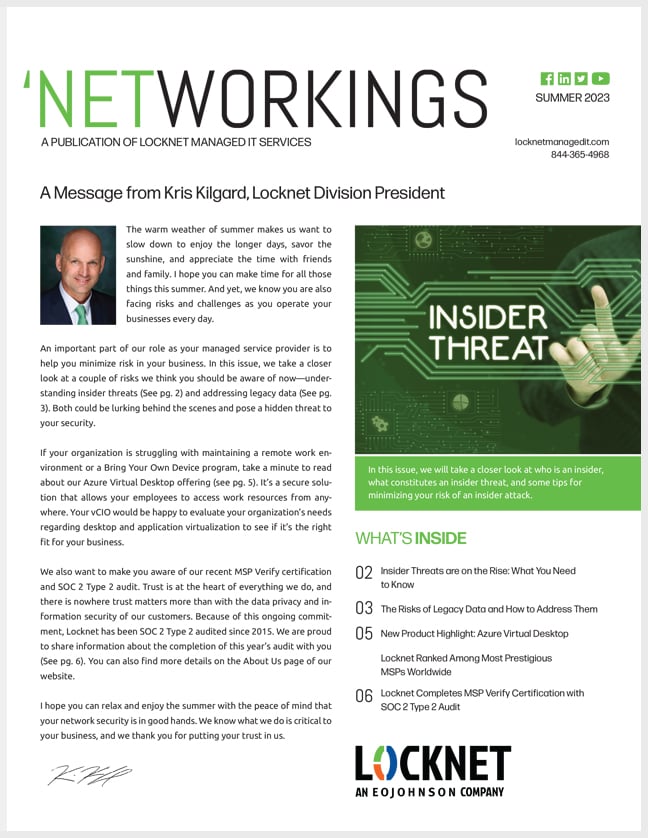Updated June 17, 2024
A persistent foothold may sound innocuous, but this cyberthreat can actually put the security of your network at risk long-term as an Advanced Persistent Threat. So what is a persistent foothold? And what does it mean to face an Advanced Persistent Threat? Read on for vital information about the reality of persistent foothold defense and how you can protect your business.
What is a persistent foothold?
A foothold allows a cyber attacker to access your network, and a persistent foothold means an attacker has leveraged malware or a backdoor that allows them to infiltrate your network long-term. Often a persistent foothold is gained when an attacker evades the safety measures you have in place to protect your network. It's like they have the combination to your lock and break into your systems repeatedly without your knowledge. That persistent access allows them to trigger malware as needed, giving the attacker precious time to do their dirty work. A persistent foothold can be an advanced persistent threat or APT, which means attackers can have specific goals to disrupt your organization, steal from you or spy on your network, maintaining a presence on your network for the long haul. A persistent foothold can be gained through phishing or spear phishing attacks, in addition to other malicious tactics--underscoring the importance of security training for employees and establishing a sound persistent foothold defense.
APT protection and persistent foothold defense
Protecting your network from attacks like persistent footholds and other advanced persistent threats is vital to any organization. Hackers are growing more sophisticated, and they're eager to exploit your company's network vulnerabilities, especially if you feel your business is too small to be on their radar. The truth is hackers know small to medium sized companies often don't have the same protections in place that larger organizations can leverage.
So, what can you do to shore up your network's defenses? Combating APTs requires a combination of tools and techniques that ideally work in a somewhat synergistic manner, so looking at your overall security posture is a good start. Each layer of security provides another obstacle for APTs, which are continuously evolving to stay hidden as long as possible. APTs tend to use several different ways to gain access to a victim's network, including spear-phishing, social engineering, attacks on websites known to be used by the business, and even physically compromising hardware before the victim receives it. The broad scope of attack vectors illustrates the importance of layered security and a robust persistent foothold cybersecurity strategy in organizations of all industries and sizes.
How Managed Detection and Response (MDR) can help
Persistent footholds can allow hackers access to your network for a long time, which is why Managed Detection and Response (MDR) is so important. MDR provides round-the-clock protection and defense against these persistent threats. Here’s how MDR can help:
- Continuous Monitoring: MDR services offer 24/7 monitoring of your network to detect any suspicious activities. This means potential threats are identified and addressed in real-time, minimizing the time attackers have to establish a persistent foothold.
- Threat Intelligence: MDR leverages advanced threat intelligence to understand the tactics, techniques, and procedures used by attackers. This intelligence helps in predicting and preventing potential attacks before they happen.
- Rapid Response: When a threat is detected, MDR services ensure a swift response to mitigate the risk. This includes isolating affected systems, removing malware, and restoring normal operations.
- Proactive Threat Hunting: MDR teams actively search for hidden threats within your network. This proactive approach helps in identifying and eliminating threats that might have bypassed initial defenses.
- Incident Reporting and Analysis: Detailed reports and analysis of incidents provide insights into the nature of attacks and vulnerabilities, helping you strengthen your overall security posture.
By implementing MDR, you can significantly reduce the risk of a persistent foothold and ensure your network is secure from advanced persistent threats.
Persistent foothold cybersecurity, Advanced Persistent Threats, and the solution
The good news is, APT protection starts with selecting the right Managed Security Service Provider or managed IT service, like Locknet® Managed IT. We specialize in long-term strategic partnerships that provide full-scale MSSP services for our clients, strengthening their security posture. The cyber security of your organization shouldn't be trusted to just. Working with a reputable company that understands your organization and the full scope of potential network vulnerabilities is key.
Our security experts are ready to help. We can get started with a thorough security assessment of your organization and then discuss our recommendations. Ensuring your network is protected from persistent footholds and advanced persistent threats is not just about technology. It's about having the right people and processes in place to defend against evolving cyber threats. Let us help you build a resilient defense strategy tailored to your business needs.










